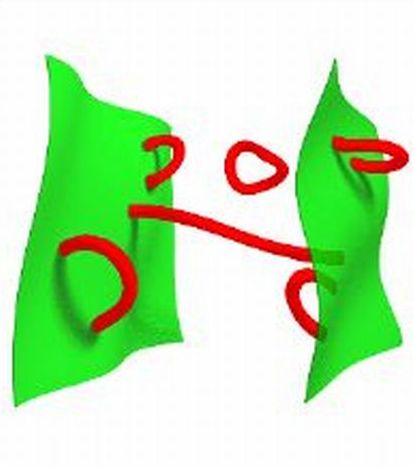Take for example bosonic string theory of which it is often said can only exist in 26 dimensions. However, on a technical level, I'm not sure this is correct and perhaps we should stop using this terminology.
What is really critical is that the central charge of your CFT = 26. For those who don't know, string theory has conformal invariance and thus has a lot to do with conformal field theories. (CFT) Conformal field theories have something called a central charge c. It seems to me, the only requirement for the bosonic string theory to be valid is that you need c = 26.
For example, take a look at David Tong's lecture notes where it is written:
The consistency requirement is merely that the degrees of freedom of the string are described by a CFT with c = 26. Any CFT will do... If you like, the space of CFTs with c = 26 can be thought of as the space of classical solutions of string theory.Now even more to the point:
We learn that the “critical dimension” of string theory is something of a misnomer: it is really a “critical central charge”. Only for rather special CFTs can this central charge be thought of as a spacetime dimension.
For example, if we wish to describe strings moving in 4d Minkowski space, we can take D = 4 free scalars (one of which will be timelike) together with some other c = 22 CFT. This CFT may have a geometrical interpretation, or it may be something more abstract. The CFT with c = 22 is sometimes called the “internal sector” of the theory. It is what we really mean when we talk about the “extra hidden dimensions of string theory”.Or consider this quote from String Theory and M-Theory: A Modern Introduction:
One may saturate the central-charge condition in other ways. In critical string theories one chooses D ≤ 26 space-time dimensions, and then adjoins a unitary CFT with c = 26 − D to make up the rest of the required central charge. This CFT need not have a geometric interpretation. Nevertheless, it gives a consistent string theoryOkay, so assuming I am reading this correctly, string theory doesn't demand there are hgher dimensions, only that the central charge takes on a special value. The theory can be lower dimensional provided the correct CFT is being used.
If this is true I think we need to stop saying string theory requires extra dimensions and start saying string theory demands special field theories that are highly constrained by the number of dimensions.

Hmmm, I don't know what to say about this. Are more dimensions problematic?
ReplyDeleteSpeaking of dimensions, why is time asymmetric? It reminds me of an engineering class where we had to look at a 2-D projection of a 3-D object from multiple angles and reproduce the 3-D object. I started wondering, since we are 3-D creatures, if time was our perception of a 4th dimension being projected onto 3 dimensions. Like a 2-D creature coming across a shadow projected by a 3rd dimension. The 2-D creature can't conceive of the 3rd dimension, but it perceives the shadow.
Stan,
ReplyDeleteI don't know that they are problematic other than we don't see them. (Although, there are arguments why we wouldn't) My point is: if string theory doesn't *require* extra dimensions, why keep claiming that is does as it seems like some people do?
As for the time issue: it is my understanding that we don't know why there is an asymmetry in time. This seems to be an open question in physics. Most people seem to explain it as something to do with entropy only increasing in one direction.
Sean Carroll at Caltech has written extensively on the arrow of time still not being understood. See for example here
Stan,
ReplyDeleteif you are interested, Sean Carroll has a book related to this time issue and will be promoting it on the Colbert Report on the 10th.
Maybe he will resolve the time issue on that show. :)
'From Eternity to Here'? Hey, that's already on my Nook's e-wish list! I love serendipity.
ReplyDeleteYes, that's the one. You'll learn allot about the arrow of time issues. Serendipity is great.
ReplyDeleteJoe, I had never looked enough into string theory to appreciate this. Good food for thought.
ReplyDeleteStan, I have something in preparation related to your time 3D/4D question.
According to Freemon Dyson, Fermi used to quote von Neumann: "with four parameters I can fit an elephant, and with five I can make him wiggle his trunk." This worry holds whether or not we interpret those degrees of freedom as spatio-temporal dimensions.
ReplyDeleteBryan, great quote.
ReplyDeleteYes, I guess a lot comes down to how we interpret those degrees for freedom.